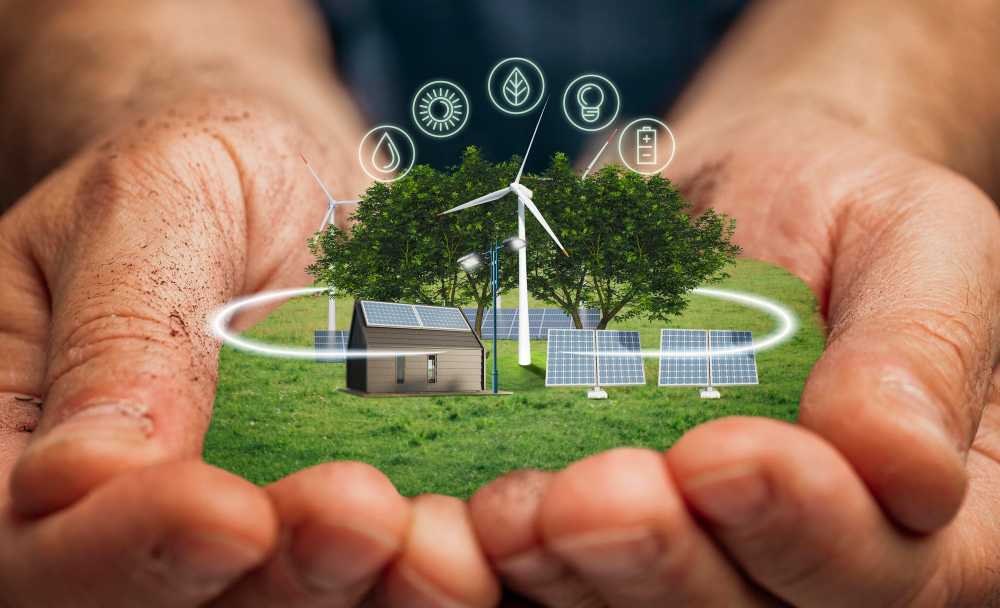As global industries pivot toward sustainability, Malaysia emerges as a regional leader in renewable energy adoption. For corporations and industrial players, transitioning to renewable energy is not just an environmental responsibility but a strategic financial decision. However, understanding the costs of adopting solar, biomass, hydropower, and other renewable sources remains challenging. This article explores the costs of renewable energy source in Malaysia, breaks down key pricing factors, and answers critical FAQs to guide corporate decision-making.
Malaysia’s Renewable Energy Landscape
Malaysia’s renewable energy sector has grown significantly, driven by government initiatives like the National Renewable Energy Policy and Action Plan and the Net Energy Metering (NEM) Scheme. Solar energy dominates the market, accounting for over 80% of renewable capacity, followed by biomass and hydropower. The government aims to achieve 31% renewable energy capacity by 2025 and 40% by 2035, creating opportunities for businesses to simultaneously reduce carbon footprints and energy costs.
For corporations and industries, renewable energy adoption aligns with global ESG (Environmental, Social, Governance) standards and offers long-term savings. However, upfront costs, technological complexity, and policy nuances require careful evaluation.
Factors Influencing Renewable Energy Costs
- Type of Technology
- Solar PV Systems are most popular in Malaysia due to its tropical climate. Costs depend on system size (e.g., rooftop vs. ground-mounted) and panel efficiency.
- Biomass: Ideal for agro-based industries (palm oil, forestry). Costs vary with feedstock availability and boiler technology.
- Hydropower: Limited to regions with waterways but offers stable, long-term costs.
- Wind Energy: Less common due to low wind speed,s but viable in coastal areas like Sabah.
- Scale of Installation
Large-scale projects (e.g., solar farms) benefit from economies of scale, lowering costs per kilowatt (kW). Small-to-medium systems for factories or office buildings may have higher upfront costs but qualify for government incentives. - Government Policies and Incentives
- Feed-in Tariff (FiT): Phased out in 2022 but succeeded by the NEM program, allowing businesses to offset grid electricity costs by selling surplus solar energy.
- Tax Allowances: Green Investment Tax Allowance (GITA) and Income Tax Exemption (ITE) for renewable energy projects.
- Green Technology Financing Scheme (GTFS): Low-interest loans for renewable installations.
- Location and Infrastructure
Solar installations in urban areas (e.g., Kuala Lumpur) face land constraints, while rural regions may lack grid connectivity. Biomass costs depend on proximity to agricultural waste sources. - Maintenance and Operational Costs
Solar panels require minimal upkeep, while biomass systems need regular feedstock supply and machinery maintenance.
Average Costs of Renewable Energy Systems in Malaysia (2023)
| Technology | Upfront Cost (MYR) | Cost per kW (MYR) | Key Considerations |
|---|---|---|---|
| Rooftop Solar PV | RM 30,000 – RM 500,000+ | RM 15,000 – RM 35,000 | Depends on system size (3 kW to 1 MW). |
| Ground-Mounted Solar | RM 1 million – RM 10 million | RM 12,000 – RM 25,000 | Suitable for large factories or parks. |
| Biomass Power Plant | RM 2 million – RM 20 million | RM 10,000 – RM 25,000 | It depends on the system size (3 kW to 1 MW). |
| Mini Hydropower | RM 5 million – RM 50 million | RM 20,000 – RM 40,000 | High upfront cost but low operational. |
| Wind Turbines | RM 1.5 million – RM 8 million | RM 25,000 – RM 50,000 | Limited to high-wind zones. |
Note: Costs exclude permits, grid connection fees, and maintenance. Due to technological advancements, solar prices have dropped 20% since 2020.
Tips to Reduce Renewable Energy Costs
- Leverage Government Incentives
Apply for tax breaks, grants, or NEM schemes to offset installation costs. For example, the NEM 3.0 program allows businesses to export solar energy to the grid at a 1:1 offset rate. - Opt for Power Purchase Agreements (PPAs)
Third-party providers install and maintain systems on your premises, while you pay a fixed rate for the energy consumed. This reduces upfront costs. - Conduct Energy Audits
Identify high energy-consuming processes and prioritize renewables for those areas to maximize ROI. - Collaborate with Industry Peers
Joint investments in shared solar farms or biomass plants can lower individual costs. - Phase Implementation
Start with pilot projects (e.g., solar panels for office lighting) before scaling up.
5 FAQs About Renewable Energy Costs for Businesses in Malaysia
1. What is the average payback period for solar PV systems?
Most commercial solar installations in Malaysia achieve a payback period of 4–7 years, depending on energy usage and NEM savings. For example, a 100 kW system costing RM 1.5 million can save RM 300,000 annually on electricity bills, yielding a 5-year ROI.
2. Are there hidden costs in renewable energy projects?
Yes. Common hidden expenses include:
- Grid connection fees: Upgrading infrastructure to integrate with TNB’s grid.
- Land preparation: Clearing or reinforcing sites for solar panels or biomass plants.
- Permitting and licensing: Costs for environmental assessments or local council approvals.
Always request a comprehensive quote from providers.
3. How do government incentives reduce costs?
- NEM 3.0: Reduces electricity bills by crediting surplus solar energy to your account.
- Tax incentives: GITA offers 100% tax exemption on qualifying green technology expenses.
- GTFS loans: Financing with rates as low as 2% for renewable projects.
4. Is renewable energy cheaper than fossil fuels for industries?
Long-term, yes. While fossil fuels (e.g., coal, gas) have lower upfront costs, renewables offer stable pricing and avoid carbon taxes. For instance, solar energy costs RM 0.25–0.35 per kWh, comparable to commercial grid rates (RM 0.30–0.45 per kWh), with no fuel price volatility.
5. Which renewable source is most cost-effective for factories?
Solar PV is ideal for most industries due to Malaysia’s sun exposure and declining panel costs. Agro-based factories (e.g., palm oil mills) can also leverage biomass from waste materials. For 24/7 operations, hybrid systems (solar + biomass) ensure uninterrupted supply.
Challenges and Solutions
- High Initial Investment
Solution: Utilize PPAs or green financing schemes to spread costs over time. - Intermittency of Solar/Wind
Solution: Integrate battery storage systems (costing RM 2,000–5,000 per kWh) to store excess energy. - Regulatory Complexity
Solution: Partner with certified energy consultants to navigate permits and incentives.
Final Thoughts
For Malaysian corporations and industries, renewable energy is a smart investment that balances fiscal prudence with sustainability goals. While upfront costs remain a barrier, government incentives, technological advancements, and innovative financing models make solar, biomass, and hydropower increasingly accessible. By understanding cost structures, leveraging policies, and prioritizing high-ROI projects, businesses can significantly reduce operational expenses and position themselves as leaders in Malaysia’s green economy.
As the nation accelerates its energy transition, early adopters of renewables will gain a competitive edge through cost savings, enhanced brand reputation, and compliance with global climate commitments. The future of corporate energy in Malaysia is green—and it’s financially brighter than ever.

